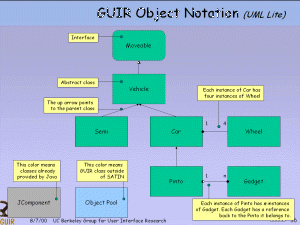
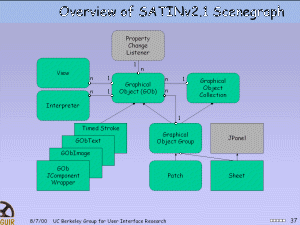
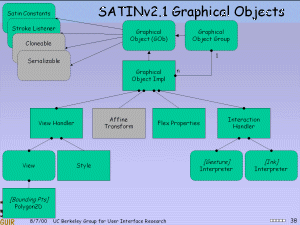
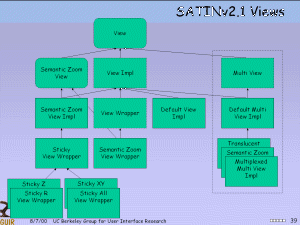
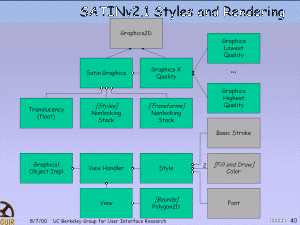
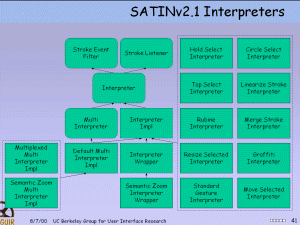
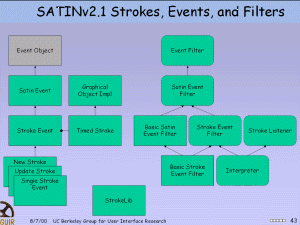
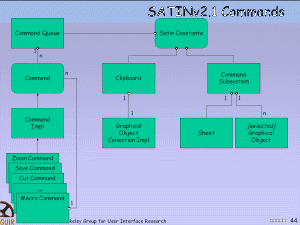
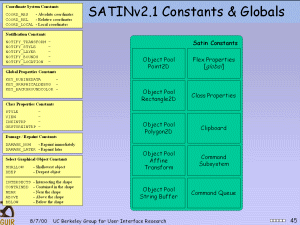
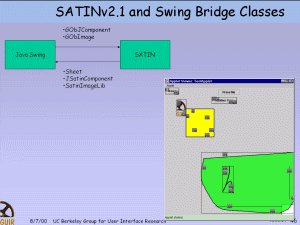
|
UC Berkeley Group for User Interface Research Updated November 17, 2000 |
|||||||||
| PREV PACKAGE NEXT PACKAGE | FRAMES NO FRAMES | |||||||||
See:
Description
| Interface Summary | |
| GestureCommandCallback | A gesture command has occurred and is calling this callback to handle the specifics of what actions should take place. |
| Interpreter | Interpreters handle the interaction side of GraphicalObjects. |
| MultiInterpreter | A type of Interpreter that can contain multiple Interpreters. |
| Class Summary | |
| DebugMultiInterpreterImpl | Basically a collection of Interpreters, used for delegation purposes by a GraphicalObject. |
| DefaultInterpreterImpl | An interpreter that does nothing. |
| DefaultMultiInterpreterImpl | Basically a collection of Interpreters, used for delegation purposes by a GraphicalObject. |
| GestureCommandInterpreterImpl | An interpreter that does commands. |
| InterpreterImpl | The superclass for all of the types of interpreters. |
| InterpreterWrapper | An abstract wrapper class for Interpreters. |
| MultiplexedMultiInterpreterImpl | Let's you choose one-of-many interpreters to be active. |
| SemanticZoomInterpreterWrapper | Makes an interpreter work on certain scales only. |
| SemanticZoomMultiInterpreterImpl | Selects among several interpreters, and wraps each interpreter so that it is active only between programmer-specified zoom levels. |
Interpreters control the state and behavior of a GraphicalObject. A GraphicalObject has an InterpreterMediator, which chooses which Interpreter or Interpreters to call when the GraphicalObject receives some input.
Sketch and Transformational INfrastructure is a toolkit for creating pen-based and sketch-based user interfaces. See http://guir.cs.berkeley.edu/projects/satin/ for an overview. Slides of the class hierarchy are available at http://guir.cs.berkeley.edu/projects/satin/class-diagrams/index.html.
This software is distributed under the Berkeley Software License.
Here are the static class diagrams:
1. Object Notation
|
2. Overview of Scenegraph
|
3. Graphical Objects

|
4. Views

|
5. Rendering

|
6. Interpreters

|
7. Strokes

|
8. Commands

|
9. Constants and Globals

|
10. Bridge Classes

|
|
Copyright Information | |||||||||
| PREV PACKAGE NEXT PACKAGE | FRAMES NO FRAMES | |||||||||